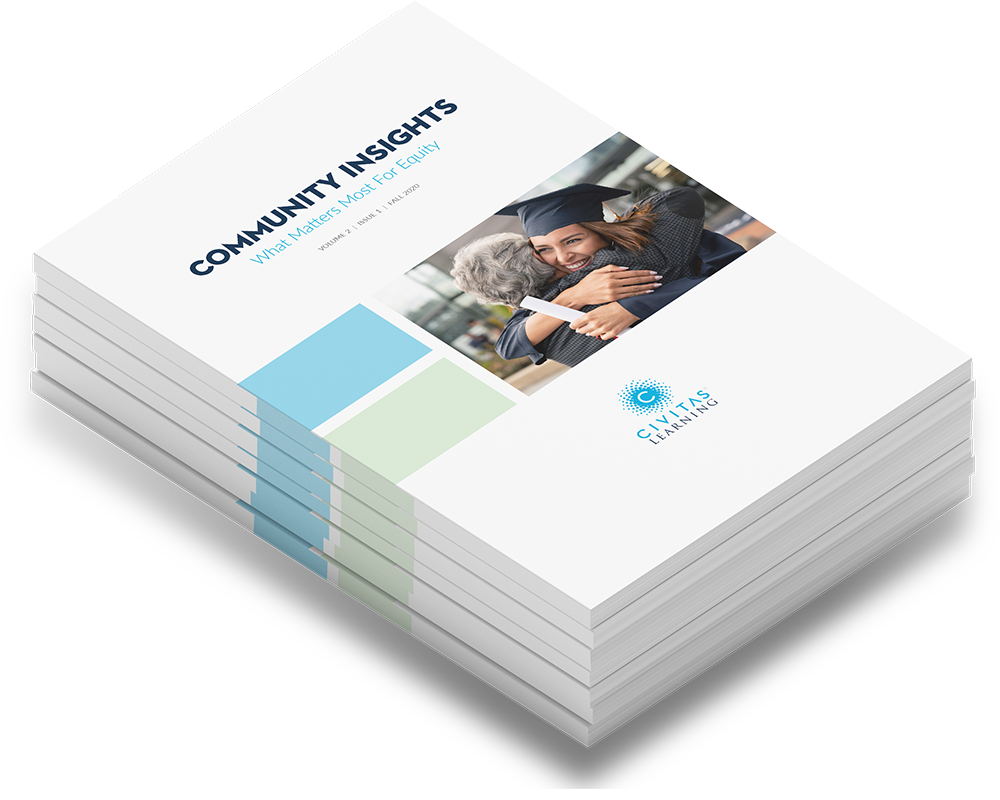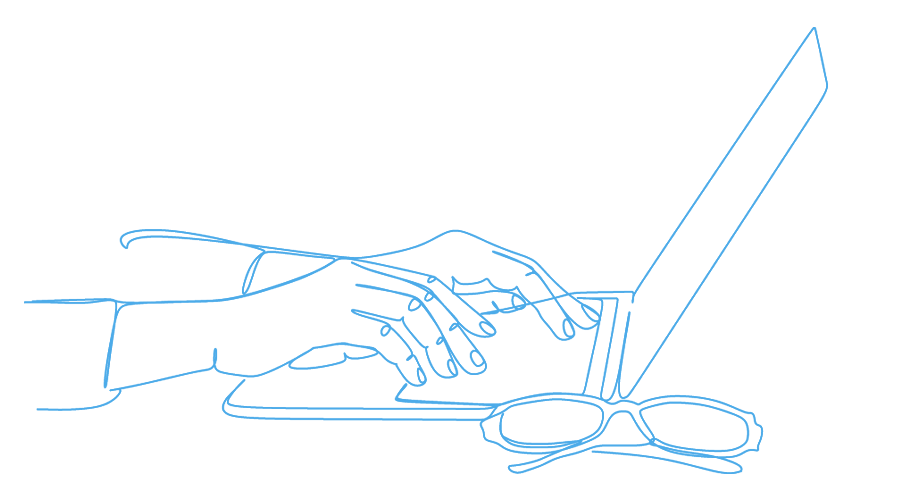As our nation grapples with the issue of equity, it’s important to examine how best to promote equitable opportunities for success among college and university students—not years down the road, but now.
In our latest Community Insights research, What Matters Most For Equity, we did just that.
We also uncovered some good news: student success interventions in our community of practice work nearly 90% of the time.
But, as the results of this study of 29 institutions also told us, the story doesn’t end there. A look at the data shows clear winners among the types of success programs examined, and in most cases, the data shows different outcomes for different students.
Advising and Degree Planning Most Effective
The most effective student success program type is advising and degree planning, with our report deeming it a near “silver bullet” for equity. Advising and degree planning produced a 9.34 percentage point positive impact for students in our analysis. That lift is more than double the positive outcome of the program type showing the second-greatest improvement.
Advising and degree planning also yielded the lowest percentage of negative or neutral impact on student success, among top-performing programs at 3.57%. That percentage is only half that of the program type with the next-lowest negative or neutral impact. Advising and degree planning had little negative impact for students at four-year institutions and no negative impact for those at community colleges.

Historically underserved minority populations saw a greater positive impact from student success interventions overall. In the case of advising and degree planning, its impact on students by race, for example, was most positive for American Indian/Alaskan Native, Pacific Islander, and Black students. In some cases, advising programs were up to three times as helpful for Black students as they were for white students.
Male and female students showed a nearly equal—and strong—positive outcome from advising and degree planning. Female students’ positive impact was 9.00 percentage points, and male students’ positive impact was 8.99 percentage points.
For our research, the category included any advising program, dosage, appointment, modality or academic planning. In short: any program or other intentional effort to guide students in navigating their higher education career.
And, there’s more good news about the use of advising and degree planning in advancing student equity: Enhancing work in this area does not necessarily require hiring more advisors or asking advisors to do more.
What’s more important is that a college or university ensures its advisors can do their work effectively and efficiently—because what matters most isn’t the number of advisors. Rather, it is relationships with students, personalized outreach, and proactive attention to students that make the greatest difference.
Other Efforts Show Promise—and Warning Signs—for Student Equity
Advising and degree planning may be the most successful type of student success program by a wide margin, according to our analysis—but that doesn’t mean it was the only type of effort shown to work. Other student success initiatives also hold promise.
But, what works for some doesn’t necessarily work for all students at all institutions.
- Academic support services—including supplemental instruction, coaching, tutoring, living/learning communities, success courses, and writing centers—produced a 4.49 percentage point lift among students overall. At community colleges, academic support services showed no negative or neutral impact. At universities, however, the negative or neutral impact was much greater: 14.52%.
- Student life and wellness is recreation, career services, housing, dorms, food, intramurals, athletics, events, Greek life, campus involvement, and auxiliary programs. Students saw positive results from these efforts as well, with a 3.71 percentage point positive outcome.
Community colleges and universities had similar positive results in student life and wellness, but university students had more positive results (3.79 percentage points) than did their counterparts at community colleges (2.09 percentage points). - Automated alerts and messages are kudos, flags, or trigger-based student interactions intended to scale student outreach and provide early alerts for students when deemed necessary. These programs provide some promise, with modest positive results propelled by the impact of “kudos” included in this type of programming. But the level of negative or neutral impact with automated alerts and transactional messages raises red flags.
Overall, the negative or neutral impact of these efforts was a whopping 30%—the highest among all program categories we analyzed.
Among subpopulations of students, the negative impact was greatest for those who are highly vulnerable. The negative impact was 18.33 percentage points for students predicted to be in the bottom quartile of vulnerability or predicted risk. - Active and engaged learning is another case of programming that shows positive results tempered by high levels of negative outcomes. Programming included in active and engaged learning is internships, research, study abroad, and service learning.
In general, this programming showed a 2.72 percentage point positive impact. That impact was more pronounced for male students, who saw a 4.09 percentage point lift versus 1.83 percentage points for female students. But negative results raise concerns in this category of student success programming as well, with a 22.73% negative or neutral outcome.
Key Takeaways: Advancing Equity Through Student Success Programs
- Advising and degree planning yielded the most consistently effective and significant results among program types. In fact, this type of student success initiative is almost a silver bullet for equity, helping some of our historically underserved populations more consistently than any other initiative studied.
- Institutions should use caution with automation, because a third of automated alerts and messaging doesn’t work. The goal of these efforts should be less about highlighting academic struggle, and more about a “do-no-harm” approach that prioritizes inclusivity and belonging.
- Collecting data about the types of student success programs that work—and for whom—provides a clearer, quicker path toward student equity. The willingness to go beyond assumptions—and then respond accordingly—can be the difference between spending years researching the issue of equity, or moving ahead now with initiatives that facilitate more equitable outcomes.





